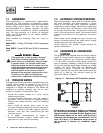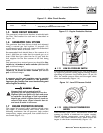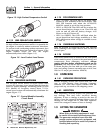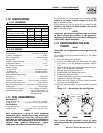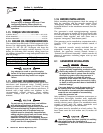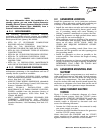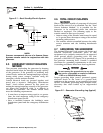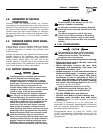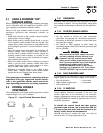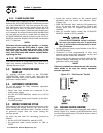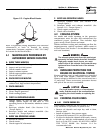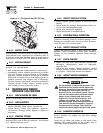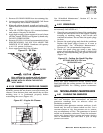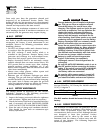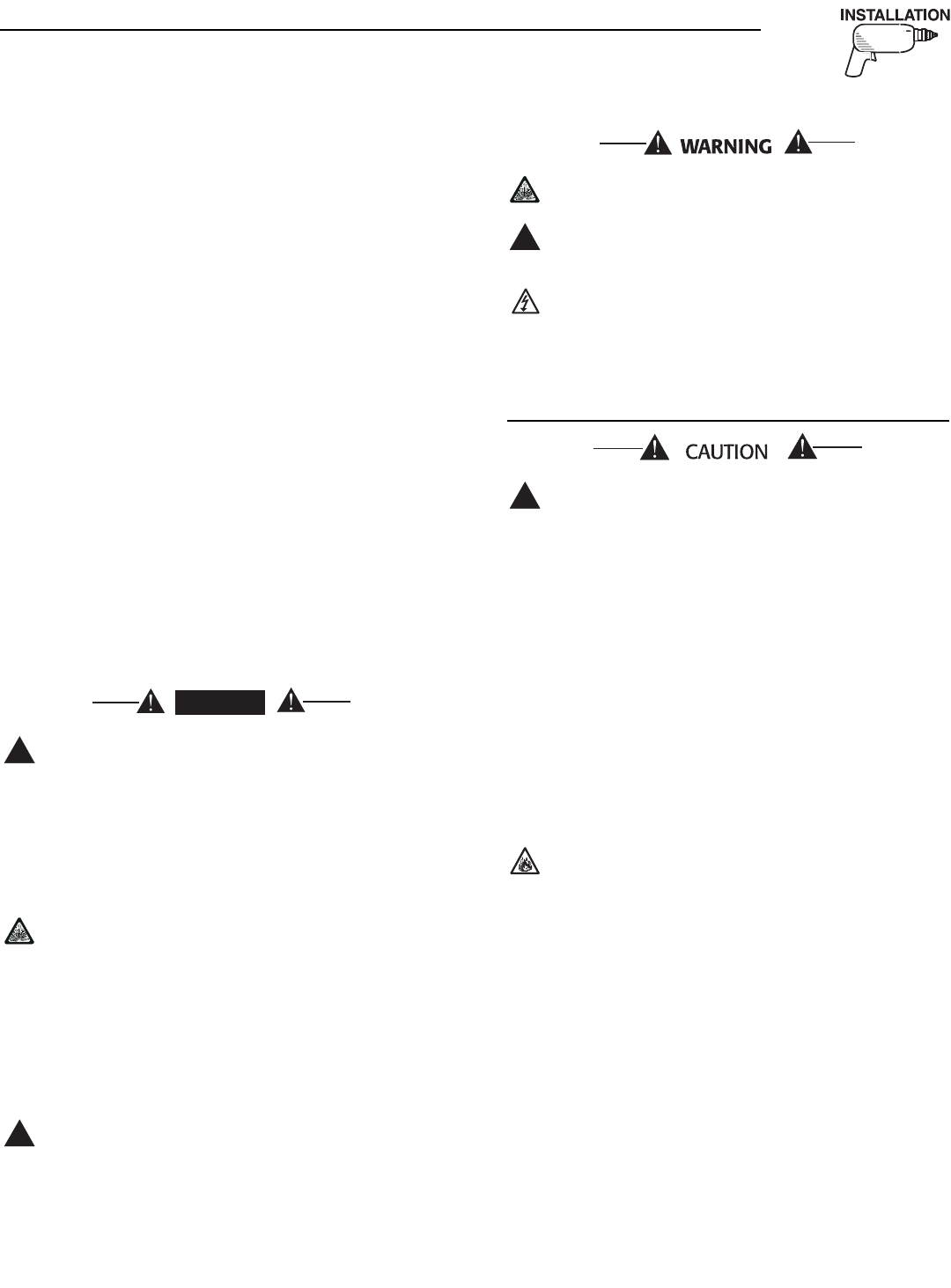
Generac
®
Power Systems, Inc. 11
2.8 GENERATOR AC NEUTRAL
CONNECTIONS
Generac uses an UNGROUNDED AC neutral.
Grounding is recommended only at the main service
entrance. If the neutral wire is grounded and one of
the phase loads becomes grounded, the excessive
current opens the load circuit breaker or collapses
the generator field. The actual result depends on the
electrical characteristics of the particular installed
generator.
2.9 TRANSFER SWITCH START SIGNAL
CONNECTIONS
If the generator is to be installed with an automatic
transfer switch, such as a Generac GTS-type switch,
it will be necessary to connect the two-wire start
control system.
Connect the two-wire start signal from the automatic
transfer switch to the automatic start connection,
which is located in the right hand corner inside the
control panel. Match wires 178 and 183 in the
transfer switch to 178 and 183 on the terminal strip
in the control panel. The conductors for the two-wire
start circuit must be in their own conduit.
2.10 BATTERY INSTALLATION
Standby generators installed with automatic
transfer switches will crank and start
automatically when normal (UTILITY) source
voltage is removed or is below an acceptable
preset level. To prevent such automatic start-up
and possible injury to personnel, do not
connect battery cables until the normal source
voltage at the transfer switch is correct and the
system is ready to be put into operation.
Storage batteries give off explosive hydrogen
gas. This gas can form an explosive mixture
around the battery for several hours after
charging. The slightest spark can ignite the gas
and cause an explosion. Such an explosion can
shatter the battery and cause blindness or
other injury. Any area that houses a storage
battery must be properly ventilated. Do not
allow smoking, open flame, sparks or any spark
producing tools or equipment near the battery.
Battery electrolyte fluid is an extremely caustic
sulfuric acid solution that can cause severe
burns. Do not permit fluid to contact eyes, skin,
clothing, painted surfaces, etc. Wear protective
goggles, protective clothing and gloves when
handling a battery. If the fluid is spilled, flush
the affected area immediately with clear water.
Do not dispose of the battery in a fire. The
battery is capable of exploding.
Do not open or mutilate the battery. Released
electrolyte can be toxic and harmful to the skin
and eyes.
The battery represents a risk of high short
circuit current. When working on the battery,
always remove watches, rings or other metal
objects, and only use tools that have insulated
handles.
2.10.1 VENTED BATTERIES
The electrolyte is a dilute sulfuric acid that is
harmful to the skin and eyes. It is electrically
conductive and corrosive. The following
procedures are to be observed:
• Wear full eye protection and protective clothing,
• Where electrolyte contacts the skin, wash it off
immediately with water,
• Where electrolyte contacts the eyes, flush
thoroughly and immediately with water and
seek medical attention, and
• Spilled electrolyte is to be washed down with an
acid-neutralizing agent. A common practice is
to use a solution of one pound (500 grams)
bicarbonate of soda to one gallon (4 liters) of
water. The bicarbonate of soda solution is to be
added until the evidence of reaction (foaming)
has ceased. The resulting liquid is to be flushed
with water and the area dried.
Lead acid batteries present a risk of fire
because they generate hydrogen gas. The
following procedure are to be followed:
• DO NOT SMOKE when near batteries.
• DO NOT cause flame or spark in battery area.
• Discharge static electricity from body before
touching batteries by first touching a grounded
metal surface.
Servicing of batteries is to be performed or
supervised by personnel knowledgeable of batteries
and the required precautions. Keep unauthorized
personnel away from batteries.
Recommended batter is Group 26, 12VDC, 550
CCA/75 AH minimum. All batteries must be at 100
percent state-of-charge before they are installed on
the generator.
!
!
!
!
DANGER
Section 2 — Installation
Centurion Liquid-cooled 15 kW and 25 kW Generators




